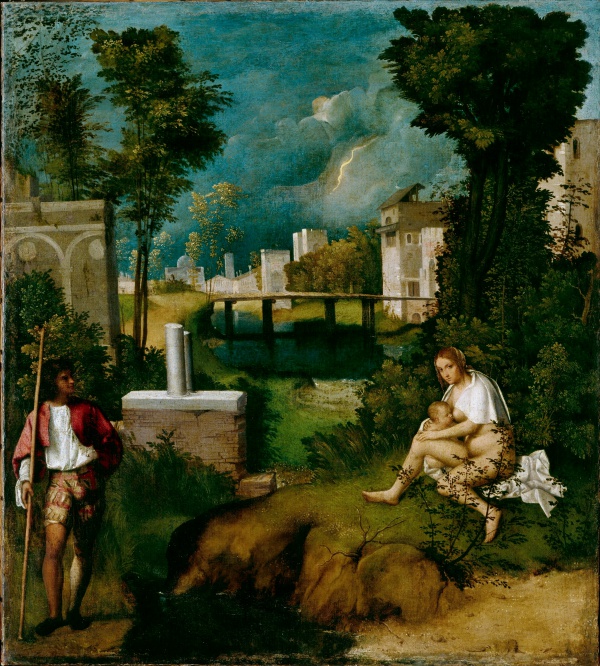Facts About The Tempest
"The Tempest" is a captivating Renaissance painting by the Italian master Giorgione, created between 1506 and 1508. Originally commissioned by the Venetian noble Gabriele Vendramin, this enigmatic artwork now resides in the Gallerie dell'Accademia in Venice, Italy.
The composition features a woman nursing a baby on the right, while a man, possibly a soldier, stands to the left holding a staff. The true meaning of this scene has puzzled art historians for years, leading to extensive debate and various interpretations.
The woman in the painting has often been referred to as a "Gypsy" earning the work an alternative title: "The Gypsy Woman and the Soldier." The painting's atmosphere hints at an impending storm, with its subdued colors and soft lighting dominated by greens and blues. The landscape is not merely a backdrop; it plays a significant role in the composition, contributing to the early development of landscape painting. The overall mood is described as "silent" a quality that continues to mesmerize viewers today.
Despite numerous theories, there is no definitive interpretation of "The Tempest." Some suggest it might depict the flight into Egypt, a scene from classical mythology, or an ancient Greek pastoral novel. Others propose moral allegories or believe Giorgione painted it without a specific subject in mind. The painting has intrigued notable figures like Lord Byron and Jan Morris, who appreciated its ambiguity and rich symbolism. It has also inspired literary works such as Ladislav Novák's poem "Giorgione's Tempest" and Mark Helprin's novel "A Soldier of the Great War."
In Neil Gaiman's "The Wake" the painting appears hanging in the dining room of the Dream King, highlighting its lasting cultural significance and influence across various artistic mediums.

 France
France